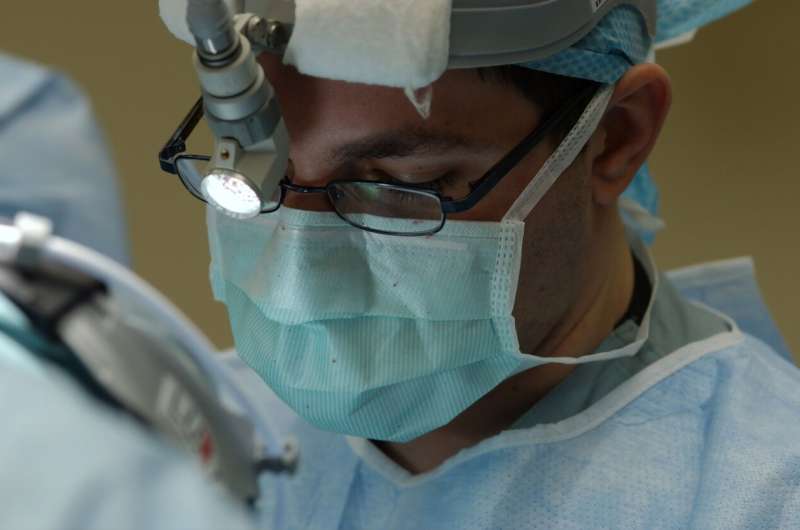New research into remote robotic surgery

A literature review by researchers at the School of Biomedical Engineering & Imaging Sciences fleshes out key issues currently preventing the proliferation of robotic procedures, specifically their use in image-guided interventional procedure in the brain.
Key criteria for future success are also highlighted.
The researchers conducted the systematic review of the literature by looking at applications of robotic systems in interventional neuroradiology—image-guided interventional procedures using devices in the blood vessels to treat diseases in the brain such as the treatment of aneurysms (blisters forming in blood vessels) which can cause catastrophic bleeding if they rupture. Another procedure is clot removal in stroke. Clot removal, known as mechanical thrombectomy, is performed to stop that area of the brain from dying.
Published in the Journal of Neurointerventional Surgery, one of the main problems identified by the researchers was that the robotic systems can only do one small part of the interventional neuroradiology procedure requiring a disproportionate amount of human input.
For example, some systems can move catheters (plastic tubes) and wires (used to guide the catheters) within the blood vessels in the brain but are unable to use many special devices within the catheters that remove clots during a stroke, or put coils into aneurysms, because the equipment is incompatible.
This example shows the need of skilled interventional neuroradiologists to step in and perform critical manual steps limiting the applicability of robots.
The School researchers are designing and building a robot that could perform mechanical thrombectomy.
Dr Crinnion, clinical research fellow at the School of Biomedical Engineering & Imaging Sciences along with his supervisors Dr Thomas Booth, Professor Kawal Rhode, Dr Christos Bergeles and Professor Hongbin Liu, and PhD student Ben Jackson, are in the very early stages of developing a system that could potentially do both parts. They are designing a controller and a catheter manipulating mechanism to overcome the aforementioned challenges.
Available robotic systems have not been proven to perform an interventional neuroradiology procedure a human cannot do and there is no evidence to show that the procedures described would be as safe when performed by a robot.
In the UK there are around 70–80 people who are trained to perform mechanical thrombectomy procedures but only around 10 percent of patients who need urgent clot removal have the procedure largely because of the lack of operators and the lack of locations where this can be performed.
"The idea is that if you replace an interventional neuroradiologist by a robot at a remote hospital, then the expert could control it from a central site and so increase the scope for treatment," states Dr Crinnion, Clinical Research Fellow at the School of Biomedical Engineering & Imaging Sciences. "Mechanical thrombectomy is a very effective treatment with a number of meta-analyses demonstrating that it is the most effective treatment for stroke and we should explore more innovative ways to help more patients."
"As shown by the systematic review, robots in interventional neuroradiology are in their infancy and there is a long way to go in the journey to make remote mechanical thrombectomy a reality. But we have the right groups of clinical and engineering experts to take this important step forwards," says Dr Thomas Booth, Senior Lecturer in Neuroimaging at the School of Biomedical Engineering & Imaging Sciences and Consultant Diagnostic and Interventional Neuroradiologist at King's College Hospital.
More information: William Crinnion et al, Robotics in neurointerventional surgery: a systematic review of the literature, Journal of NeuroInterventional Surgery (2021). DOI: 10.1136/neurintsurg-2021-018096















